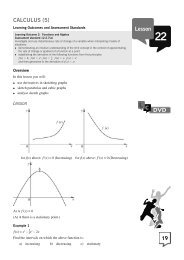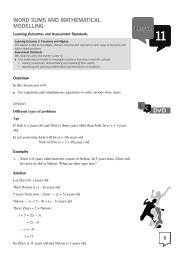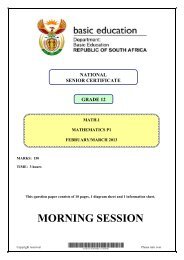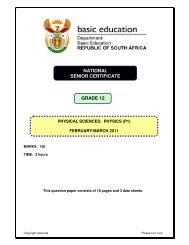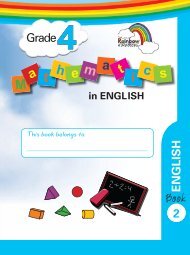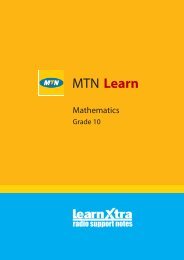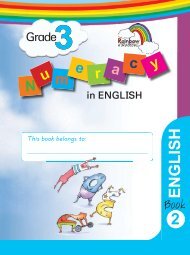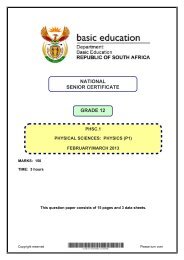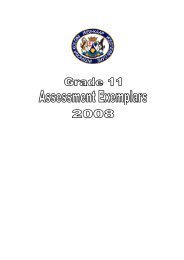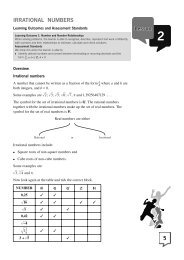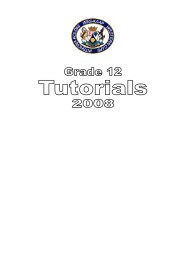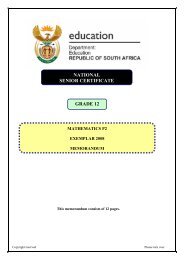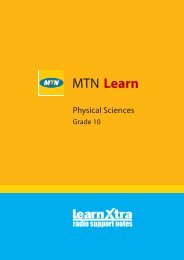Teacher's Guide Module 1 - Maths Excellence
Teacher's Guide Module 1 - Maths Excellence
Teacher's Guide Module 1 - Maths Excellence
Create successful ePaper yourself
Turn your PDF publications into a flip-book with our unique Google optimized e-Paper software.
IN LEARNING UNIT 3<br />
Focuses on a variety of methods for subtraction. Remember that learners are<br />
allowed to use their own strategies, but at the end of grade 5 they should all be<br />
able to subtract vertically.<br />
Make sure that the learners are totally at ease with the correct terminology:<br />
minuend; subtrahend; difference; sequential numbers.<br />
This learning unit lends itself to the theme “Inclusively” and Critical Outcome 3<br />
(Learners organise and manage themselves and their activities responsibly and<br />
effectively) and 8 (Learners reflect on and explore a variety of strategies to learn<br />
more effectively).<br />
Activity 3.1.1 or something similar is an assignment for the portfolio. Teachers<br />
must make sure that learners know exactly what is expected of them. The matrix<br />
for assessment must be given to the learners beforehand and explained so that<br />
they understand the process.<br />
2-3 weeks should be sufficient time for the completion of this unit.<br />
STEP BY STEP THROUGH MODULE 1<br />
LEARNING UNIT 1<br />
Mental calculation<br />
Number sense<br />
Counting forwards and backwards<br />
(Activity 1-8) Division by multiples of 10<br />
Even and uneven numbers<br />
Place value<br />
Extended notation<br />
Number patterns<br />
Arranging from great to small<br />
More than; less than<br />
Relationship signs<br />
Computations with 10 000s<br />
Rounding off to the nearest 10, 100 and 1 000<br />
Multiples<br />
Factors<br />
Prime numbers<br />
Brain teasers<br />
LEARNING UNIT 2<br />
Mental calculation<br />
Addition<br />
Count in 10 000s<br />
(Activity 1-11)<br />
Addition by means of flow diagram<br />
Addition using the constant function of the pocket<br />
calculator<br />
Computations with Roman figures, using the<br />
commutative and associative properties of addition<br />
Addition by rounding off first<br />
Addition using number combinations<br />
Problem solving<br />
Comparing methods of addition<br />
Addition using the memory of the pocket calculator<br />
Assignment using cash slips<br />
Brain teasers



